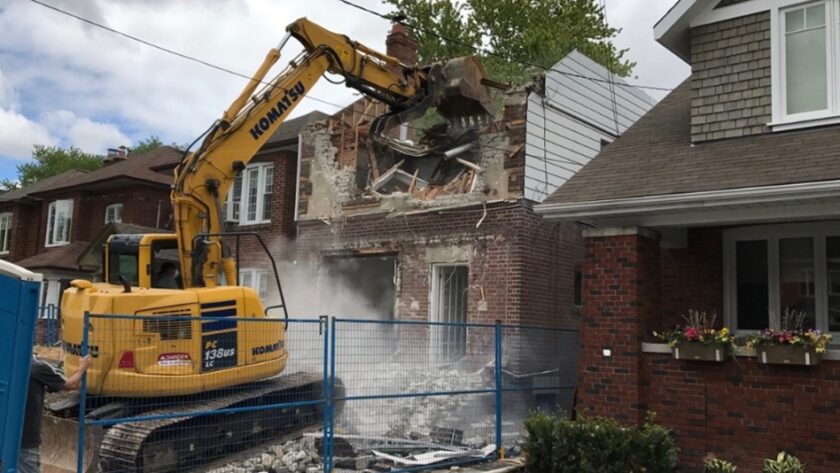When it comes to house demolition, it’s essential to understand that it’s not just about swinging a wrecking ball or bulldozing a property. The process involves a series of well-planned steps, permits, safety measures, and environmental considerations. In this comprehensive guide, we’ll take you through the step-by-step process of house demolition in Toronto, ensuring a smooth and lawful procedure from start to finish.
Step 1: Pre-Demolition Preparation
Site Assessment
Before any demolition work begins, a thorough site assessment is conducted. This evaluation involves checking for hazardous materials, such as asbestos or lead-based paint, that may need special handling. Additionally, structural engineers examine the building to determine the safest demolition methods.
Obtaining Permits
Demolishing a house in Toronto requires proper permits. Depending on the scope of the project, you may need a demolition permit, environmental permits, and more. It’s crucial to ensure all necessary permits are in place before proceeding.
Step 2: Utility Disconnection
Gas, Water, and Electricity
To prevent accidents and hazards during the demolition, utilities like gas, water, and electricity must be disconnected from the property. This is a critical safety measure that must be performed by licensed professionals.
Step 3: Salvage and Recycling
Materials Salvaging
Before the actual demolition begins, any salvageable materials, such as doors, windows, fixtures, and reusable building materials, should be carefully removed and preserved. This practice not only benefits the environment but also can generate cost savings.
Waste Recycling
Efforts should be made to recycle as much of the demolished materials as possible, reducing the environmental impact of the demolition. Concrete, metal, and wood are often recyclable and should be separated and sent to appropriate recycling facilities.
Step 4: Demolition Methodology
Manual Demolition
In some cases, houses may be partially dismantled manually to salvage specific components. This method is slower and more labour-intensive but can be useful when preserving certain elements of the building.
Mechanical Demolition
Most house demolitions in Toronto involve mechanical methods, such as the use of excavators equipped with demolition attachments. This approach is efficient for larger structures and provides precise control over the demolition process.
Step 5: Environmental Considerations
Dust Control
Demolition work generates dust that can be harmful to the environment and public health. Dust control measures, including water sprays and barriers, are essential to minimize airborne particles.
Waste Disposal
Proper waste disposal is crucial. Demolished materials and debris must be transported to authorized landfills or recycling centres, following all waste disposal regulations and guidelines.
Step 5: Site Cleanup
Debris Removal
Once the house is demolished, all debris and materials need to be cleared from the site promptly. This ensures safety and prevents any further environmental damage.
Site Grading
Site grading involves levelling the land and preparing it for any future construction or landscaping projects. It’s a critical step to ensure the site is safe and aesthetically pleasing.
Step 6: Final Inspections
City Inspections
After the demolition is complete, city inspectors will visit the site to ensure that the work has been carried out in compliance with all applicable regulations and permits. This is a crucial step to obtain the necessary clearance to proceed with any future construction.
The Benefits of Hiring Professionals
Hiring professionals for house demolition offers several significant benefits.
- Professionals possess the expertise and experience necessary to navigate complex regulations and permits, ensuring a lawful process.
- They prioritize safety, protecting both workers and the surrounding community.
- They can efficiently salvage valuable materials, reduce environmental impact through recycling, and properly dispose of waste, contributing to a more sustainable demolition.
- Their knowledge of advanced demolition methods and equipment guarantees a quicker and more precise job, saving time and money in the long run.
- Overall, hiring experts for house demolition in Toronto ensures a smooth, responsible, and efficient process from start to finish.
Conclusion
In conclusion, house demolition in Toronto is a multi-faceted undertaking that requires meticulous planning and execution. By following this step-by-step guide, you can ensure that your demolition project proceeds smoothly, complying with all necessary regulations and environmental considerations.




